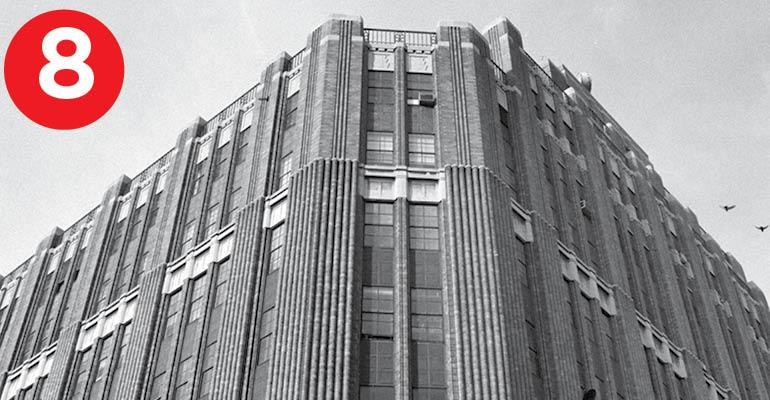- Lenders Brace for Private Equity Loan Defaults “The default risk of companies owned by private-equity firms is 2.5 times that of their public counterparts, according to data collected from banks, insurers and asset managers by analytics firm Credit Benchmark. Private-equity firms use leveraged loans, rated below investment grade, for the financing of buyouts of target companies. Financial institutions raised their estimates of the average probability of default—or nonpayment—for such loans to about 6% in September from 5.44% a year earlier, according to the data.” (Wall Street Journal, subscription required)
- Restoring Brooklyn’s Queen of Department Stores “For more than a century, Abraham & Straus was the reigning queen of Brooklyn department stores, the centerpiece of a shopping corridor that in its heyday was the borough’s answer to Manhattan’s Fifth Avenue. Growing to become the fourth largest such store in America, the elegant behemoth was a proud show place — as integral to the borough’s identity as the Brooklyn Dodgers and The Brooklyn Daily Eagle.” (The New York Times)
- Here's Where the Housing Shortage is the Worst “entory has been falling annually for five straight months, after it recovered slightly toward the end of last year, due to a spike in mortgage rates. Rates began falling again by spring of this year. Homebuilders have been increasing production slowly, but it’s not enough to meet the increasingly strong demand.” (CNBC)
- As Rents Outrun Pay, California Families Live on a Knife’s Edge “Much attention has been focused on the more visible extremes of California’s housing crisis: the $100 million mansions not far from where people live on the streets. But thousands of families like Ms. Fregoso’s — working renters whose pay has inched upward while housing costs have rocketed — are barely hanging on in a housing market that has tipped further and further in favor of homeowners.” (The New York Times)
- Airbnb Operating Chief to Step Down, Join Board “Airbnb Inc. Chief Operating Officer Belinda Johnson has decided to step down as the company prepares to go public. Ms. Johnson will join the Airbnb board of directors after she exits the operating-chief role, Airbnb said Friday. She joined the company in 2011 as the first executive to be hired by the company’s co-founder and Chief Executive Brian Chesky. Ms. Johnson’s last day as operating chief is March 1, an Airbnb spokesman said.” (Wall Street Journal, subscription required)
- Here's What the EB-5 Rule Changes Mean for Real Estate “The EB-5 program’s new federal regulations take effect today, and will double the minimum dollar amount that all foreign visa-seekers must plow into development projects. The rules are designed to clamp down on abuse, to modernize the 30-year-old federal program and to keep up with inflation. EB-5 allows foreign investors get U.S. green cards in exchange for investing in American businesses and creating at least 10 jobs.” (The Real Deal)
- Malls Are Dying. The Thriving Ones Are Spending Millions to Reinvent Themselves “Abdul Mannan was perched on a stool, scrolling through his phone, on a recent afternoon at Lakeforest Mall in suburban Washington. He was two hours into his shift at a jewelry kiosk and had yet to exchange words with a single customer. There was a time, he says, when business was brisk, and the Gaithersburg, Md., shopping center teemed with shoppers. But that was before the J.C. Penney at the end of the corridor closed this summer. The Lord & Taylor went dark a few weeks later, and soon Sears will be gone, too.” (Washington Post)
- Timber! SF’s Next Architectural Trend Could Be Eco-Friendly Buildings Made of Wood “The large panel of wood that hovered in the air above a De Haro Street construction site last Friday was something never seen before in the city. It’s formed from seven layers of black spruce grown in Quebec, 24 feet long and 8 feet wide, each layer glued one-to-the-next and then pressed together like a panini. A crane slowly lowered it into place atop thick wooden columns and beams — the first of hundreds of panels that will be an integral part of the structural frame of a four-story, 60-foot-high commercial building.” (San Francisco Chronicle)
0 comments
Hide comments





